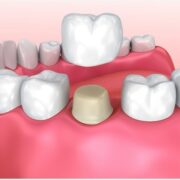A website’s design is critical to a website’s success. It is a design that makes the website unique, appealing, and user-friendly. If you want to create a website with a powerful, impactful, and unique design, don’t assume or have any preconceived idea about how it should look.
For every designer, it is important to make sure that your website resonates with your brand. That is why it is an individual process because no two brands share the same goals or values.
Look at your brand’s mission statement, and it will guide you in designing a website that will have an impact on your target users. There are no set rules when it comes to designing; it is all about your creativity. It is about your interpretation, and how you want the user to see your site. You can use Canva for wireframing and mockups.
Having said that, there are still some principles that you need to follow, as they will ensure that your website is functional and engaging. Let’s discuss them below.
Make sure the font that you use is web-friendly and readable
Typography is essential to all websites, whether it is an e-commerce website or a blog. When you use the right font, it enhances the personality of your brand and helps attract the attention of the use.
Also, a good font is important because it makes the site functional and readable. How do you expect your user to stay on the site if they have to squint to read the message or product detail?
Web-friendly fonts are Arial, Times New Roman, Courier New, and Helvetia as they are readable and work well at any size on both desktop and mobile.
Make use of negative space
Negative space or blank or white space is the empty area that you can see between the elements of a website, like images or text. You must leave some negative space on your website as it makes the site more appealing and helps the user focus on the product.
If there is no white space, the site looks cluttered and the user is confused as to what to do next, they are not able to take action as they are distracted by too many elements. And this is something that you don’t want.
Patterns
- F-pattern: In this, the user scans the website an F-pattern. It means that the information is at the top. The user looks at it first, and then they move towards the left to look at numerals, and then on to bullet points, and lastly across the page to view any bold text. It is best for landing or sales pages.
- Z-pattern: In this, you look at the data from the left to the top right, which creates an imaginary horizontal line. After that, you look down towards the left, forming a diagonal line. And then it moves across to the right again, making a horizontal line. This pattern is best for pages with minimal information.
Consistency
Consistency is important to make your brand known. But it is not about only fonts, color schemes, or typography. You need to make sure that the spacing between your texts on a website is also consistent. It helps make the website look more professional.
Navigation
You need a clear and simple navigation system that makes logical sense to the user. It should be easy to see and should guide the user so that he/she can see the whole website without getting lost. You can ei
they go for a sidebar or drop-down menu, but make sure that it is user-friendly.
The audience approach
You need to create a design that the audience can relate to. Don’t design the website keeping your wishes in mind. The design should be according to the likes, dislikes, and fears of the audience. Their needs and desires ad everything should reflect in your color schemes and fonts and so on.
Design for both mobile and web
A user can check your website on both the web and mobile as per their convenience. That is why make sure that the design is such that user has no problem opening it on any device.
Ensuring you follow these principles will give you a strong foundation.













